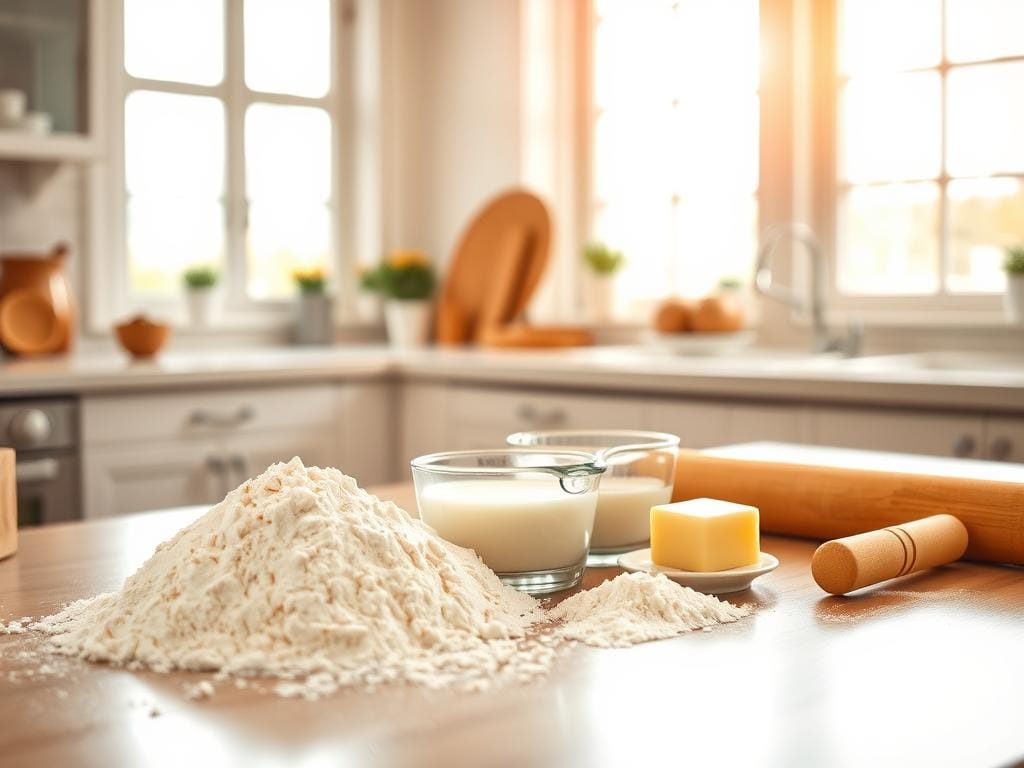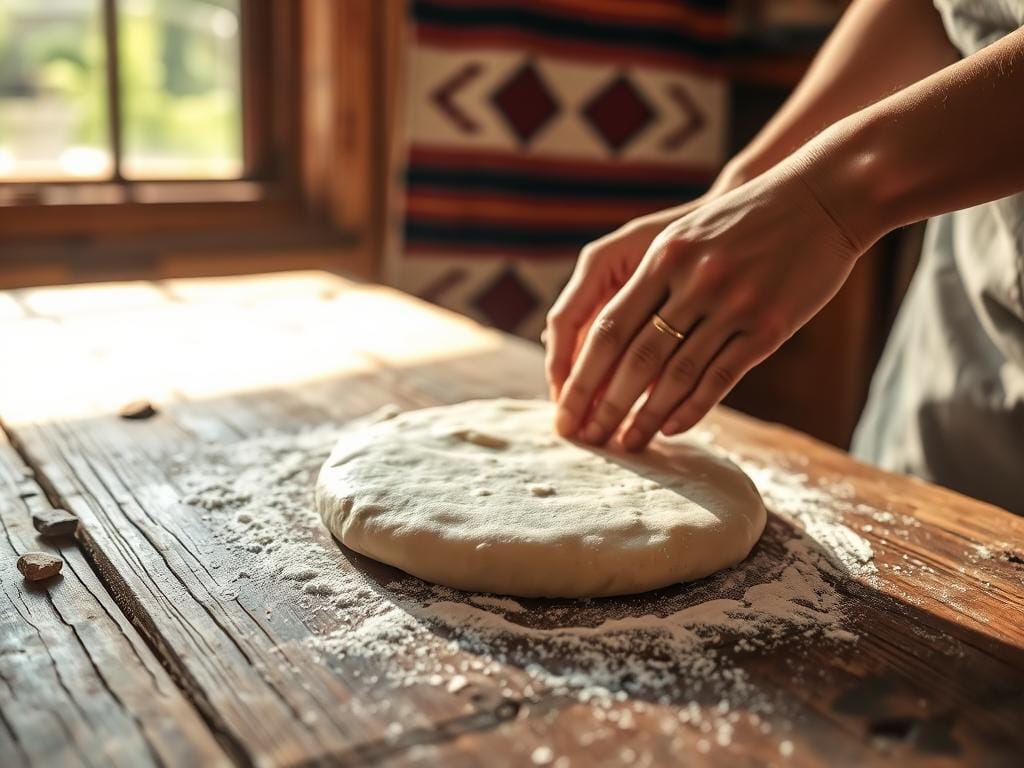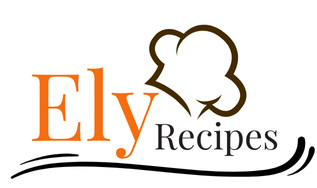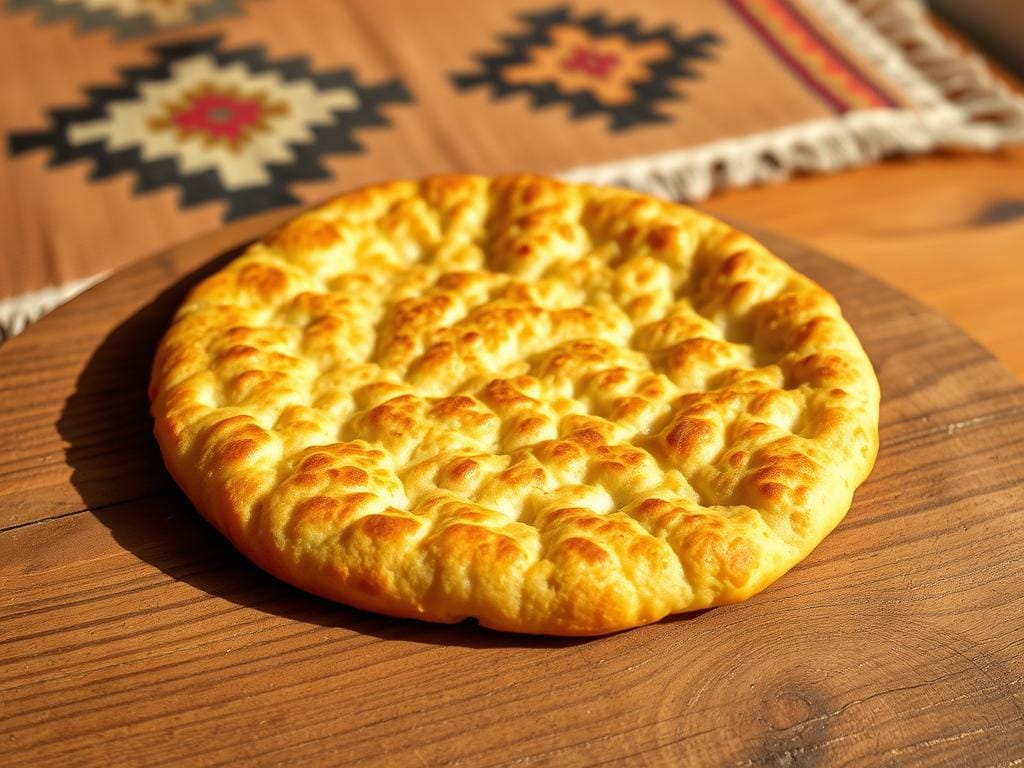Trying traditional Native American cuisine is more than just a taste. It’s a journey into a story of survival. From hearty stews to comforting classics like American Goulash, these dishes reflect resilience and heritage.
This bread is a sign of cultural power. Made from flour, sugar, salt, and lard, it was a lifeline for the displaced. Its story is one of adaptation and survival against all odds.
Today, fry bread connects generations, turning simple ingredients into a tradition. It celebrates indigenous heritage. From Indian tacos to sweet treats, fry bread keeps cultural roots alive.
Table of Contents
Key Takeaways
- Fry bread originated during the Navajo people’s forced relocation in 1864
- Created from government-provided ingredients as a survival food
- Represents cultural resilience and indigenous culinary traditions
- Versatile dish used in multiple recipes like Indian tacos
- Recognized as South Dakota’s official state bread in 2005
Ingredients
To make authentic frybread, you need to know the key ingredients. These turn simple dough into a beloved dish. Native American cooking uses simple items to make this iconic food.

- 3 ¼ cups all-purpose flour
- 2 tablespoons baking powder
- 1 ½ teaspoons salt
- 1 ½ to 2 ½ cups hot water
- 2 cups vegetable oil for frying
Each part is vital for the right taste and texture. Flour gives it shape, baking powder makes it light, and salt adds flavor. Together, they create a tasty base for your fried dough.
| Ingredient | Quantity | Purpose |
|---|---|---|
| All-Purpose Flour | 3 ¼ cups | Creates dough structure |
| Baking Powder | 2 tablespoons | Helps dough rise |
| Salt | 1 ½ teaspoons | Enhances flavor |
| Hot Water | 1 ½ – 2 ½ cups | Binds ingredients |
| Vegetable Oil | 2 cups | Frying medium |
Remember, technique is as important as ingredients. Don’t overwork the dough to avoid a hard texture. You want a soft, fluffy bread that respects traditional cooking.
You can try adding milk for extra creaminess, but traditionalists stick to water. Each batch makes 4 small loaves, great for sharing with loved ones.
Directions
Making authentic Navajo fry bread is all about precision and care. It’s a dish that connects generations through a simple yet delicious recipe. Let’s go through the steps to make this traditional dish.
Preparing the Dough
To begin your fry bread adventure, you’ll need these ingredients:
- 2 cups all-purpose flour
- 1 teaspoon salt
- 1 tablespoon baking powder
- 1 cup hot water
Mix the dry ingredients in a big bowl. Slowly add hot water, stirring until a soft dough forms. Knead the dough gently for about 5 minutes. Then, let it rest for 15-20 minutes to enhance flavor and texture.
Frying Technique
Get ready to fry by heating oil to exactly 350°F. Split the dough into 4 equal parts, making each into a golf ball-sized ball. Flatten each ball into a thin disc, about 6-7 inches in diameter.
| Frying Step | Details |
|---|---|
| Oil Depth | 1 inch |
| Frying Time | 20-30 seconds per side |
| Desired Color | Golden brown |
From the Editor
For a real Navajo taco, top your fry bread with seasoned ground beef, beans, lettuce, and cheese. The bread can be enjoyed sweet or savory, making it very versatile. Pro tip: Keep finished fry bread warm in a 200°F oven while you prepare your toppings.
Storage tip: Fry bread stays fresh at room temperature for 1-2 days. For longer storage, freeze for up to 3-4 months. Reheat at 350°F for about 15 minutes.

Nutrition Facts (per serving)
Explore the nutritional value of this traditional bread, key to Native American cuisine. A single serving of fry bread has 502 calories. It’s a hearty dish that shows the rich culinary heritage of Indigenous communities.
Your slice of fry bread has 19 grams of total fat, with 7 grams of saturated fat. It’s packed with 73 grams of carbs, giving you energy. Plus, it has 10 grams of protein, helping meet your daily needs.
This Native American staple is full of vitamins and minerals. It’s rich in Thiamin (55% daily value), Niacin (44% daily value), and Folate (74% daily value). It also has 34% of your daily iron, making it more than just tasty.
Fry bread is calorie-dense but it’s more than just food. It’s a deep cultural connection. Enjoying this dish is like celebrating Native American traditions. It’s a way to honor resilience, history, and delicious heritage.
FAQ
Q: What is fry bread and why is it important?
A: Fry bread is a traditional Native American bread. It symbolizes resilience and cultural heritage. It was made during hard times, showing the adaptability of Indigenous communities. Now, it’s a favorite at powwows, family gatherings, and cultural celebrations in North America.
Q: Is fry bread difficult to make at home?
A: No, it’s not hard at all! Fry bread needs just flour, baking powder, salt, and water. With a bit of practice, you can make delicious, crispy bread. It’s great on its own or as a base for Navajo tacos.
Q: What are some traditional ways to serve fry bread?
A: Fry bread is very versatile. Enjoy it sweet with honey, powdered sugar, or cinnamon. Or, go savory with Navajo tacos, ground beef, lettuce, and cheese. It’s also tasty plain as a side dish.
Q: Is fry bread nutritionally healthy?
A: Fry bread is high in calories and fat. But, it’s more about cultural significance than nutrition. It’s a key part of Native American culinary heritage. Enjoy it in moderation as part of a balanced diet.
Q: Can I make fry bread gluten-free?
A: Yes! Use gluten-free flours like corn or rice flour instead of wheat. The texture might differ, but you can make a delicious version that respects the traditional recipe.
Q: What type of oil is best for frying bread?
A: Vegetable oil or canola oil are best for fry bread. They have high smoke points and neutral flavors. Heat the oil to 350-375°F for the best results.
Q: How long can I store fry bread?
A: Fry bread is best enjoyed fresh and warm. But, you can store it in an airtight container at room temperature for 1-2 days. Reheat it in an oven to restore crispiness.
Q: Is fry bread specific to one Native American tribe?
A: Fry bread is enjoyed by many Indigenous tribes across North America. While often linked to Navajo cuisine, each community has its own twist. This reflects their unique cultural traditions.

